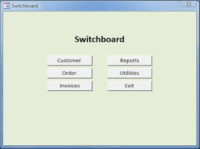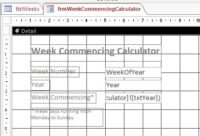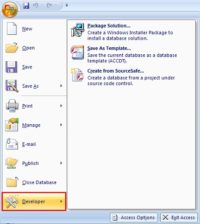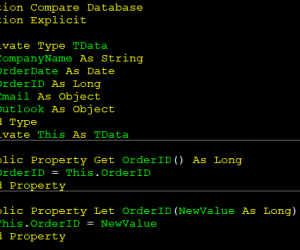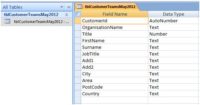This is a quick tip on how to automatically display a form when the user opens your Access Application. In addition to improving User Friendliness, your database design will also appear much more professional. The step by step instructions below will display the Switchboard form in figure 1 immediately upon the application opening. This will…
Microsoft Access File Extensions
Microsoft Access saves information under the following file formats: File Format Extension Access Project (2007, 2010) .adp Access Blank Project Template (2007, 2010) .adn Access Database (2007, 2010, 2013, 2016) .accdb Access Record-Locking Information (2007, 2010, 2013, 2016) laccdb Access Web App Reference .accdw Access Signed Packages .accdc Access Database, used for Add-ins .accda Access…
Using Custom Functions in Calculated Controls
Custom functions work the same way as MS Access built-in functions such as DateAdd, DatePart and DSum, but are instead created ourselves as database developers. We do this by creating a public function with the VBA programming language and save it inside a global module within the database. Today I am going to explain how custom functions can be…
Access 2007: Access Developer Extensions
The Microsoft Office Access 2007 Developer Extensions make it easy to deploy and manage solutions built using Microsoft Access. The Access 2007 Developer Extensions provide packaging and deployment tools and licensing and distribution agreements to make it easier for developers to bring solutions to market. Whether you are working in a small business or a…
Module level variables
It is common to create a big wall of declaration in a module such as this: Private strCompanyName As String Private dteOrderDate As Date Private lngOrderID As Long Private objEmail As Object Private objOutlook As Object While the code will compile and work fine, the discoverability and naming of the module level variables does become…
Hardware Recommendations For Running Access
Hardware matters. Invest in a faster PC and your Microsoft Access databases will run faster. Be alert for sellers packaging fast processors with minimal memory and a slow hard drive to keep prices low. Look at all aspects of the purchase when database speed is a priority. A faster hard drive is worth the investment…
Creating a Make Table Query
Before we create the Make Table Query, you might like to create a new blank database file. This is so we have a separate database into which we can paste the new table from the query. In this exercise I have called it HistoricData.accdb. Here is the procedure to create a Make Table Query: Open…
Microsoft Access 2003 Language Reference [Access 2003 VBA Language Reference]
This reference contains conceptual overviews, programming tasks, samples, and references to guide you in developing solutions based on Microsoft Access. The reference contains the following sections: What’s New: Provides a list of new members by object and in alphabetical order. Concepts: Provides important concepts for developing custom Access solutions. Reference: Provides reference materials for the Access…
ID vs Code
There are cases where a table’s primary key is referred to often in the code. In fact, it might have some special meanings in code. It is highly encouraged to avoid the use of IDENTITY or AutoNumber (or any auto-incrementing schema) for those keys because it is also usually desirable to create a VBA Enum…
Hiding the Navigation Pane with VBA
Once you have created an Access Database Application to be used by other people, it may well be important for you to prevent users from gaining access to any of its design features. By this I mean, you may not want users to modify your tables, forms and queries etc in design view (inadvertently or…
